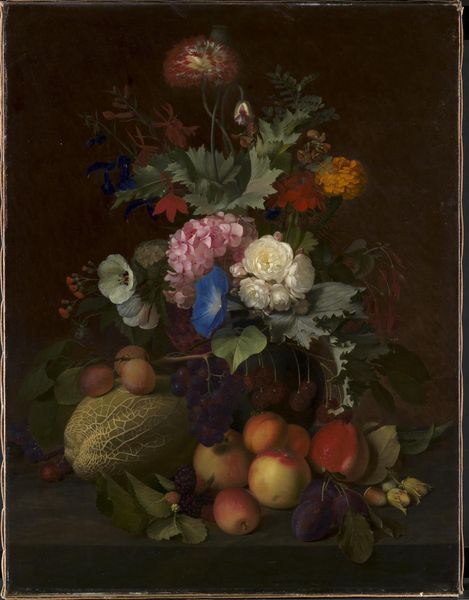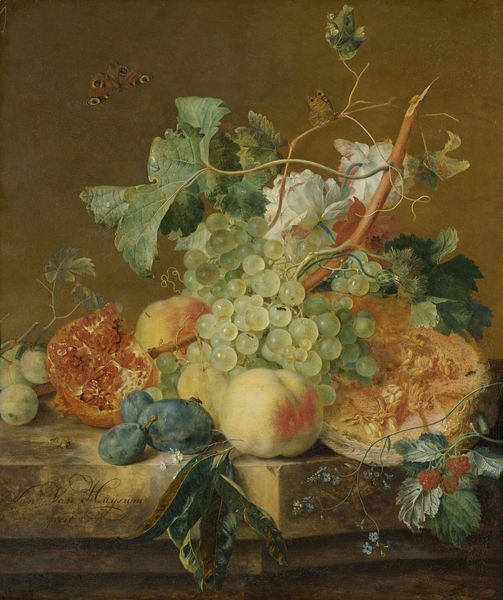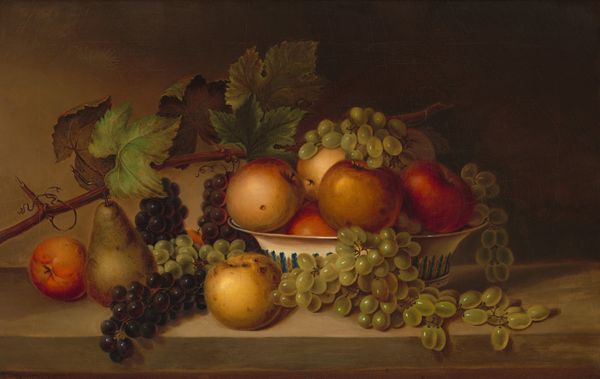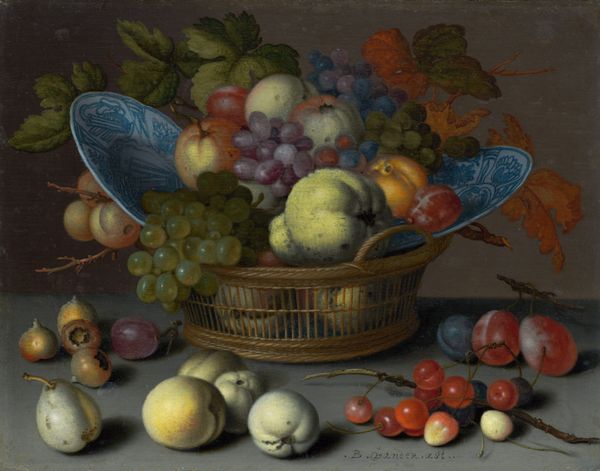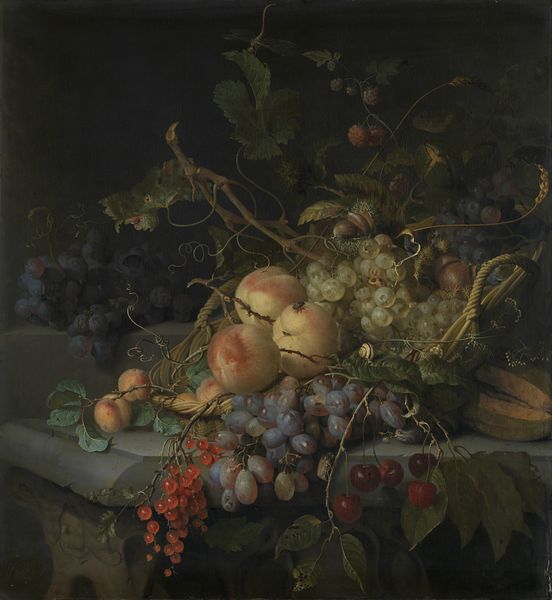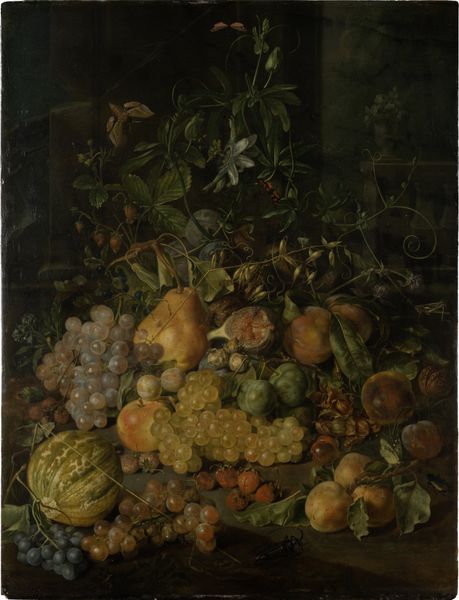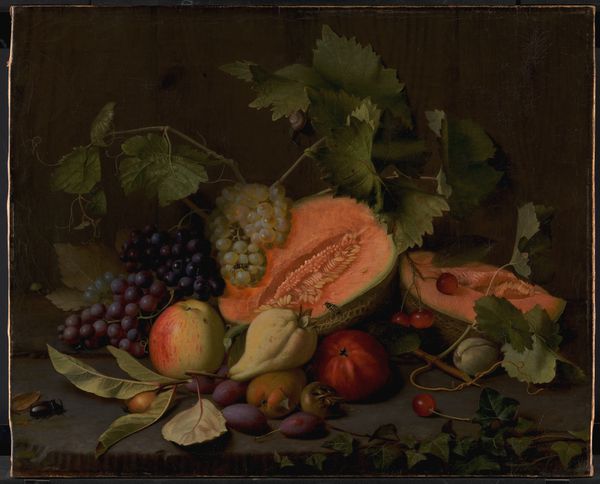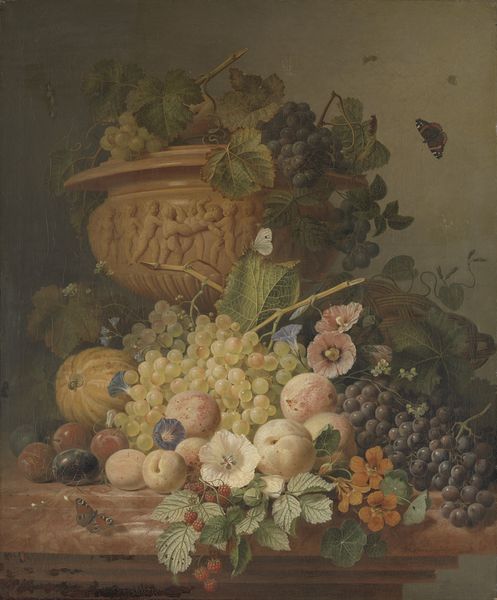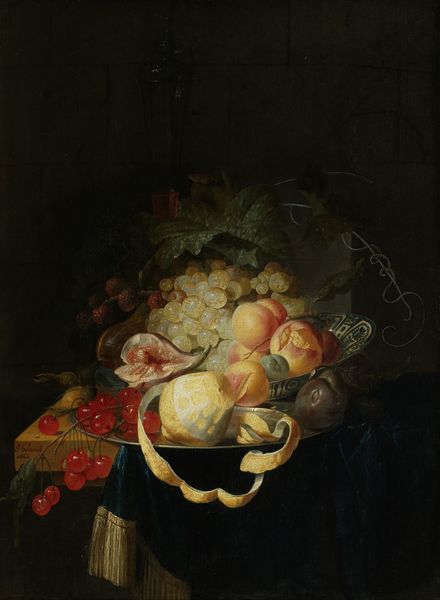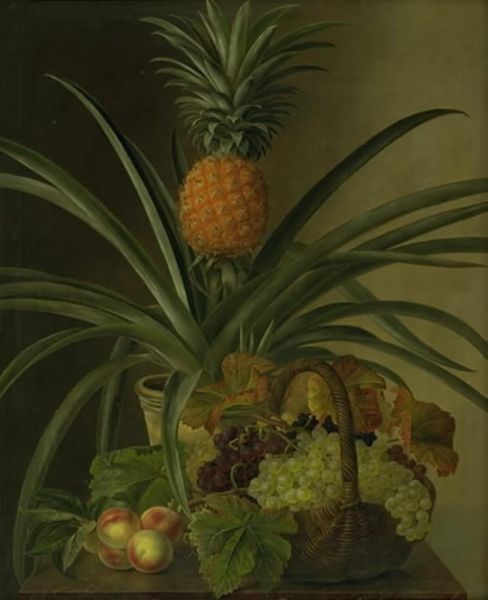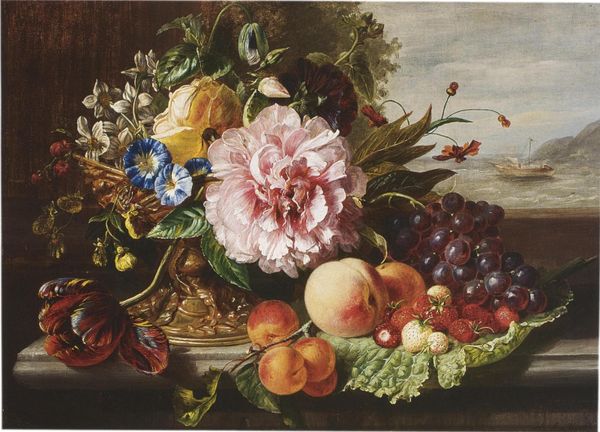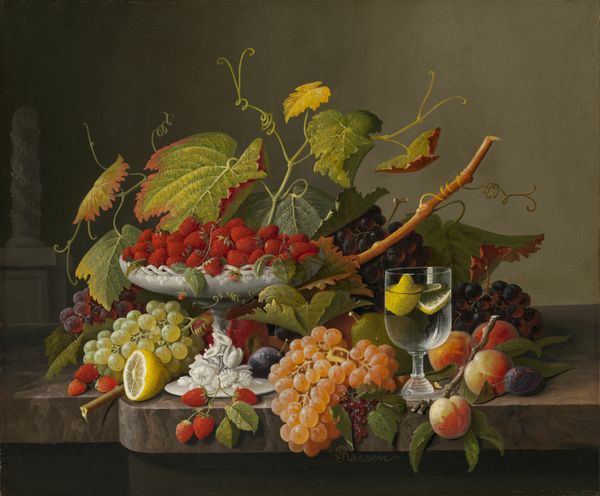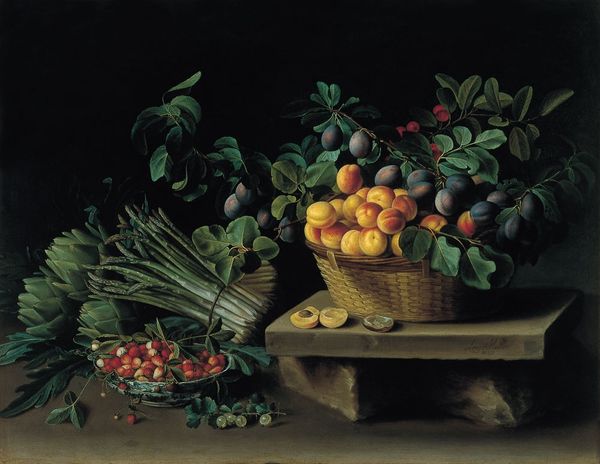
oil-paint
#
gouache
#
still-life-photography
#
oil-paint
#
oil painting
#
fruit
#
romanticism
#
genre-painting
#
realism
Dimensions: height 49.5 cm, width 44 cm, height 37.1 cm, width 31.3 cm
Copyright: Rijks Museum: Open Domain
Curator: Let’s discuss Anthony Oberman’s "Still Life with Fruit in a Terracotta Dish," created around 1830, now residing here at the Rijksmuseum. Editor: Immediately, I notice the almost overflowing abundance—the composition teeters between controlled arrangement and the lushness of nature taking over. There’s something almost hedonistic about it, wouldn’t you agree? Curator: Absolutely, but within that supposed indulgence lies a potent commentary, or perhaps, celebration of global exchange and the burgeoning Dutch economy of the period. Think about it—each piece of fruit, likely imported, acting as a symbol of colonial enterprise and wealth accumulation. Editor: It's more than just commercial wealth, though, right? It's the weight these fruits and vessels carried culturally, historically. A terracotta dish would suggest earth, nourishment, domestic rituals…it speaks to me of a comforting timelessness. The grapes especially. Grapes have been symbolic of luxury and also sacrifice in religious paintings since Ancient Roman times. Curator: That is true, and if we consider the cultural politics, we can read those symbolic associations into its broader context. In a rising class system built upon exploited resources, representations of luxury can become very charged emblems of wealth, prestige, and inequality. Editor: Even in the arrangement of the light, it feels calculated, creating a drama. You see how the light catches some fruits just so, highlighting specific textures and contours while others remain shadowed, almost secretive. This evokes the dichotomy of access and denial in the socioeconomic strata. Curator: Yes, and notice the oil-paint, creating that highly-polished, almost seductive surface quality… it enhances this reading of consumerism and display. But consider how we might question the gender dynamics, and even who gets a place in such an economy. Were paintings like these only available to upper-class men? What happens to female artisans or people of color? Editor: Fascinating. Thinking through the symbolic weight—the grapes, the leaves—against the backdrop of wealth and the painting’s very materiality gives the image an entirely fresh potency. Curator: Indeed, the work provides us with endless opportunities to explore intersectional dynamics that affect who we are, where we come from, and what it all means to see something as ordinary as a bowl of fruit represented in art.
Comments
rijksmuseum about 2 years ago
⋮
Originally, horses were Oberman’s speciality. However, there was little demand for the genre in the Netherlands, so around 1825-1830 he switched to painting still lifes of flowers and fruit. This fruit arrangement includes both native and glasshouse-cultivated varieties which were available around 1830 in the Netherlands, although in different seasons. This harvest includes plums, quinces, peaches and currants.
Join the conversation
Join millions of artists and users on Artera today and experience the ultimate creative platform.
